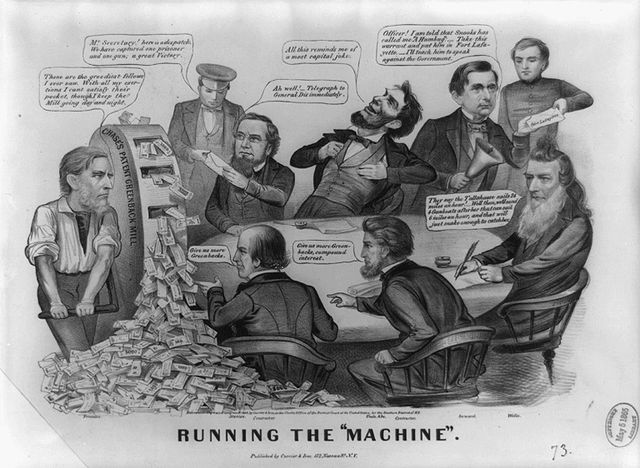The Legal Tender Cases were two 1871 United States Supreme Court cases that affirmed the constitutionality of paper money. The two cases were Knox v. Lee and Parker v. Davis.
Obverse of the first $1 bill, issued in 1862 as a legal tender note featuring Treasury Secretary Chase, who later held as Chief Justice that such bills are unconstitutional, before being overturned
A United States Note, also known as a Legal Tender Note, is a type of paper money that was issued from 1862 to 1971 in the United States. Having been current for 109 years, they were issued for longer than any other form of U.S. paper money other than the currently issued Federal Reserve Note. They were known popularly as "greenbacks", a name inherited from the earlier greenbacks, the Demand Notes, that they replaced in 1862. Often termed Legal Tender Notes, they were named United States Notes by the First Legal Tender Act, which authorized them as a form of fiat currency. During the early 1860s the so-called second obligation on the reverse of the notes stated:This Note is a Legal Tender for all debts public and private except Duties on Imports and Interest on the Public Debt; and is receivable in payment of all loans made to the United States.

Large-sized Series of 1880 United States Notes; the $20 note displays Alexander Hamilton and a red scalloped Treasury seal, and the $10 note displays Daniel Webster and a large red spiked Treasury seal
Comparison of a $5 Demand Note (upper image) and an 1862 issue $5 United States Note (lower image) in which the words "On Demand" and the phrase "Receivable in Payment of All Public Dues" are removed and the Treasury Seal is added
A political cartoon from the 1864 U.S. presidential election depicting Secretary Fessenden of the Lincoln administration operating "Chase's Mill" at left to flood the country with Greenbacks.
Series of 1901 $10 Legal Tender depicting military explorers Meriwether Lewis, William Clark, and an American bison





